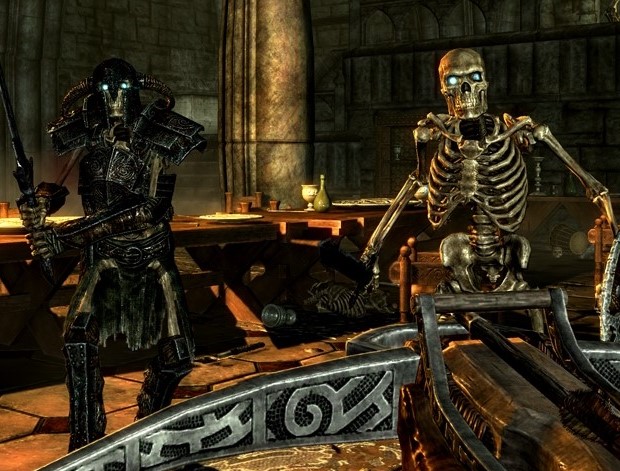

Typically, as the Dragonborn levels up, weaker creatures will be replaced by higher level forms of that creature, for example: Bandits, after a certain level requirement has been met, will start to be replaced with Bandit Outlaws, Bandit Marauders and so on. Dragons, by contrast, are always leveled.

In The Elder Scrolls V: Skyrim, not all characters or enemies level up with the Dragonborn: Giants, for example, are at a static level, which means they are always level 32, as are mammoths. Aside from an obvious bump in resolution, not much has changed, and the remaster has even managed to introduce a number of graphical glitches that weren't present in the original release.Leveled Creatures are creatures whose health, magicka, and stamina are upgraded as the player gains levels - a feature introduced in The Elder Scrolls III: Morrowind. It adds some welcome bits and pieces, like camera distance options and a very hard difficulty setting, but visually, it's not a huge improvement. However, as a remaster, Re-Reckoning can be very hit and miss. There's so much room for experimentation here, and it's another area in which Amalur still excels. Depending on your choices, your play style may change dramatically as you begin to favour specific weapon types and skill synergies. You can spend all of your skill points on maxing out a single tree, or you can dabble in a bit of everything. Developing your fateless hero is engrossing, as you mix and match abilities from three different skill trees: Might, Finesse, and Sorcery. There's a lot of busywork to get through if you go looking for it, but again, it's the promise of more combat that keeps you hooked.Ĭharacter progression is also a factor. Killing a specific monster, collecting a certain number of items - you know the drill. Similarly, side quests are often quite boring. It's an interesting plot on paper, but it's mostly told through dreary dialogue from secondary characters that you don't really care about.


 0 kommentar(er)
0 kommentar(er)
